Exploring Biofilm-Related UTI Symptoms and Treatment
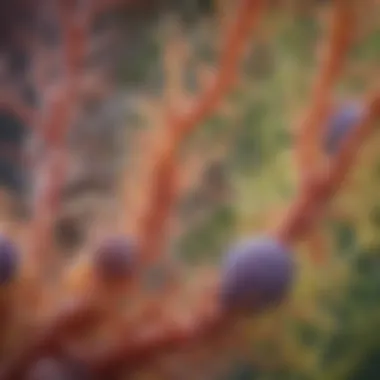
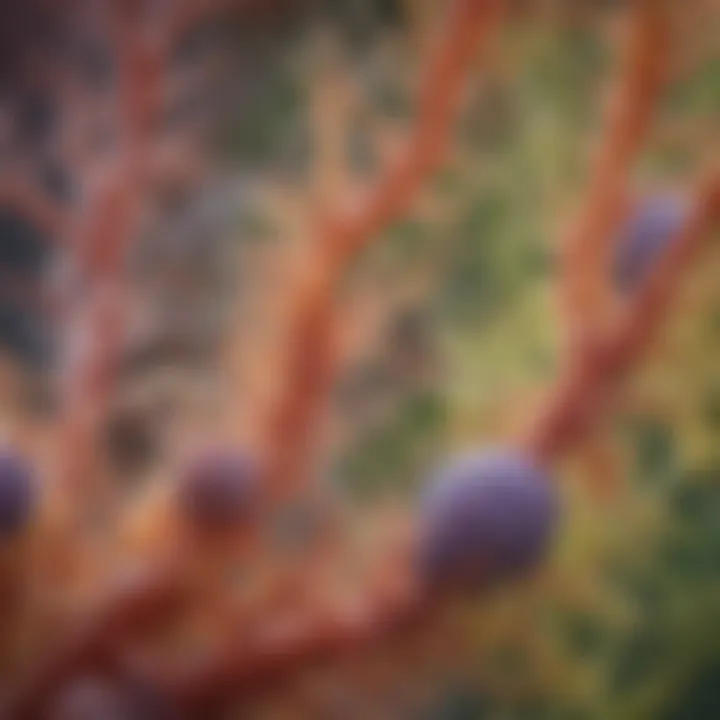
Intro
Urinary tract infections (UTIs) are a persistent and common health concern affecting a large portion of the population, especially women. However, when these infections are tied to biofilms, the whole narrative changes. Biofilms are complex communities of microorganisms that attach themselves to surfaces, often protected by a self-produced matrix that makes them resilient. This unique structure can lead to chronic infections that are particularly challenging to diagnose and treat.
Understanding the symptoms associated with biofilm-related UTIs can offer a clearer picture for healthcare professionals and patients alike. The symptoms may overlap with those of typical UTIs but can be more insidious, frequently recurring despite treatment. Symptoms can include:
- Burning sensation during urination
- Increased urgency to urinate
- Frequent urination, even when little urine is produced
- Lower abdominal or back pain
- Cloudy or strong-smelling urine
The complexity of biofilms complicates the infection's management and can lead to higher rates of recurrence, as traditional antibiotics may not penetrate the biofilm effectively. With this in mind, delving into the relationship between biofilm formation and UTIs becomes essential. The distinction lies in understanding the biological intricacies and clinical significance behind these infections, as well as their broader implications on patient care and health outcomes.
Preamble to Biofilms and UTIs
Urinary tract infections (UTIs) are notorious for their prevalence and the discomfort they cause. Though many may brush these infections off as mere nuisances, the underlying complexities warrant a closer examination. A critical aspect often overlooked is the involvement of biofilms in these infections. Biofilms are communities of microorganisms that adhere to surfaces, creating a protective environment for themselves. This phenomenon adds an extra layer of challenge in both diagnosis and treatment of UTIs.
In this section, we will explore the definition of biofilms and provide an overview of urinary tract infections. Understanding these two elements is essential for grasping the broader implications in both medical treatment and research.
Definition of Biofilms
Biofilms can be described as thin layers of microorganisms that stick to surfaces. These layers are formed when bacteria and similar organisms create an extracellular matrix. This matrix can be thought of as a protective bubble—helping the microorganisms resist antibiotics, immune responses, and other environmental threats.
You may have encountered biofilms unknowingly, whether it's that slimy layer on your toothbrush holder or the greenish discoloration in a neglected fish tank. In the medical realm, biofilms can form on catheters, prosthetic devices, and even in chronic wounds. The formation of biofilms is initiated by bacterial attachment to a surface, followed by microbial reproduction and matrix production.
Moreover, biofilms are not static; they can disperse, sending individual microbes into the bloodstream or other body parts, which can lead to more severe infections. This adaptability is what makes biofilm-associated infections so difficult to treat.
Overview of Urinary Tract Infections
Urinary tract infections occur when harmful bacteria invade any part of the urinary system—kidneys, ureters, bladder, or urethra. Most frequently, UTIs are rooted in the bladder, leading to conditions like cystitis. Symptoms typically involve painful urination, a persistent urge to go, and lower abdominal discomfort.
UTIs usually stem from bacteria that are naturally present in the digestive system, such as Escherichia coli. For some, these infections are a one-off experience, while others may find themselves in the throes of recurrent issues. The role of biofilms here cannot be ignored, as these structures can form on the lining of the bladder or on catheters. When this happens, traditional treatments may fail, resulting in ongoing discomfort and complications.
"Biofilms act as a shield for bacteria, making standard treatment approaches less effective. Understanding their role is vital for effective management and research."
Understanding the definitions and dynamics behind biofilms and UTIs lays the groundwork for an intricate conversation about symptoms, challenges in diagnosis, and treatment strategies, all pivotal to tackle these common yet often misunderstood infections. Now let us dive deeper into the biology of biofilm formation.
The Biology of Biofilm Formation
Understanding the biology of biofilm formation is critical in unraveling the complexities surrounding urinary tract infections (UTIs) linked to biofilms. The way bacteria organize themselves into biofilms offers valuable insight into their survival strategies, which are especially important in a clinical context. This section focuses on the mechanisms by which biofilms develop and the role microbial communities play in their structure and function.
Mechanisms of Biofilm Development
Biofilms are structured communities of microorganisms that adhere to surfaces and are encased in a self-produced matrix of extracellular polymeric substances (EPS). The development of biofilms is a multi-step process and follows a series of stages, including:
- Initial Attachment: Bacteria first attach themselves to a surface, which can be anything from catheters to the cells lining the urinary tract.
- Aggregation: The bacteria begin to cluster together, forming micro-colonies.
- Maturation: As these micro-colonies grow, they produce EPS, facilitating the establishment of a protective layer.
- Dispersion: Eventually, cells within the biofilm can detach and disperse, potentially leading to new infections.
These stages illustrate not just the physical process involved but also highlight how biofilms afford bacteria heightened resistance to harsh conditions, including antibiotic treatment. The EPS matrix, laden with polysaccharides, proteins, and nucleic acids, serves both as a shield against immune responses and a reservoir for nutrients. By understanding these mechanisms, researchers can better address and tackle biofilm-associated UTIs.
Microbial Communities in Biofilms
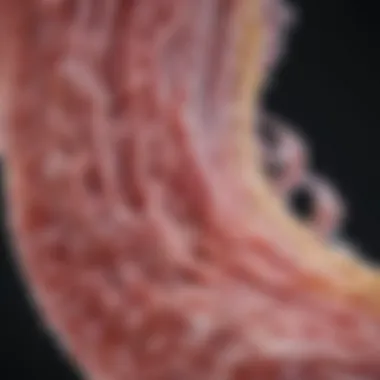
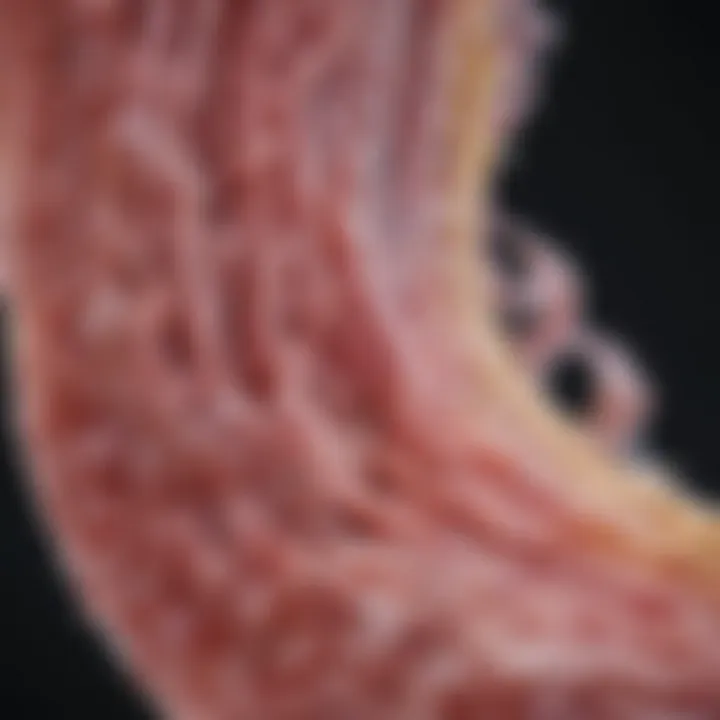
The composition of microbial communities in biofilms is nothing short of fascinating. These communities often consist of diverse populations of bacteria, archaea, and fungi, creating a complex ecosystem where interspecies interactions play a critical role. Within a biofilm, you will often find:
- Dominant Species: Some species take on a more dominant role, primarily due to their metabolic capabilities or resilience.
- Cooperation and Competition: Bacteria in biofilms can work together or compete for resources, influencing community dynamics.
- Resistance Genes: Biofilms often harbor resistance genes, making it that much harder to treat infections they cause.
"The cooperative behavior of microbes within biofilms is a prime example of nature's complexity, illustrating how simple organisms can work together to survive in challenging environments."
Studies have shown that these microbial communities are not just passive clusters; rather, they exhibit a kind of community intelligence. Their behavior can adapt based on external stimuli, demonstrating a degree of communication between cells that can further complicate matters for healthcare providers attempting to treat UTIs.
In summary, a thorough understanding of biofilm formation requires looking beyond the individual roles of bacteria. It also necessitates examining how these organisms collaborate and respond to their environment, with profound implications for the prevention and treatment of biofilm-related UTIs. Recognizing these complexities helps both in devising new therapeutic strategies and in tailoring management approaches for patients suffering from recurrent infections.
Symptoms Associated with Biofilm UTIs
Understanding the symptoms associated with biofilm-related urinary tract infections (UTIs) is crucial for accurate diagnosis and effective treatment. Unlike standard UTIs, which typically present with straightforward symptoms, biofilm-related infections often add layers of complexity. This variability can significantly impact patient management strategies as well as therapeutic outcomes. Knowing what signs to look for can lead to faster intervention and better health results.
Common Symptoms
Painful urination
Painful urination is perhaps the most recognized symptom of UTIs. This sensation can range from a mild tingling to sharp, intense discomfort. It arises because inflammation and irritation commonly occur in the bladder and urethra. This symptom stands out for its immediate and alarming nature, compelling patients to seek medical help. The specificity of painful urination makes it a key characteristic in this article. One of its unique features is that it can lead to a diagnosis even before lab tests confirm an infection, urging timely treatment.
Increased frequency of urination
Frequent urination goes hand in hand with painful urination and is marked by the need to urinate more often than usual. This symptom can be unsettling, disrupting daily activities and sleep patterns. For patients already dealing with the discomfort of a UTI, increased urgency can feel overwhelming. The key characteristic here is that it’s not just about going more often; it also highlights how biofilms might be influencing the body’s signaling. This symptom is often the tipping point that drives people to consult a healthcare professional. Its downside lies in the possibility that people may misinterpret this urge as a less severe condition initially, which could lead to delays in seeking appropriate medical care.
Urgency to urinate
Urgency is that intense feeling that one must urinate immediately, sometimes even when the bladder isn’t full. This symptom is distinct yet related to frequency; however, urgency presents clear psychological and physical stress. The sensation is driven by the body's nervous system reacting to the irritants in the urinary tract. In this article, urgency is a beneficial component to discussing biofilm infections as it showcases how biofilms can distort the normal functioning of the urinary tract. While it’s a clear indicator of a deeper problem, its presence also tends to cause anxiety, further complicating the overall experience for patients.
Complicated Symptoms
Chronic pelvic pain
Delving into more complicated symptoms, chronic pelvic pain is a persistent condition that has numerous underlying causes but can be particularly tied to biofilm UTIs. This symptom often leads to a frustrating journey for patients as they seek root causes. Just like a pebble in a shoe, chronic pain can disrupt daily life immensely. Its importance in the article lies in how it informs about ongoing, unresolved biofilm issues. Its unique feature is that it often transcends the primary urinary symptoms, emphasizing the need for more thorough diagnostic evaluations. Patients suffering from chronic pelvic pain often feel a sense of helplessness, underscoring the need for awareness in both the patient community and medical practitioners alike.
Flank pain
Flank pain, which is felt in the side or back below the ribs, can indicate involvement of the kidneys. This pain varies from a dull ache to sharp discomfort and can be a serious indicator of a more severe infection. The link between flank pain and biofilm-related UTIs is significant; its occurrence often suggests that the infection is not just limited to the bladder but may also encompass the upper urinary tract. Its distinction in this article is paramount, as it highlights the spectrum of complications that can arise from biofilm infections. Such pain can be a wake-up call that demands comprehensive medical attention, avoiding potential complications like kidney damage.
Fever and chills
Finally, fever and chills are systemic symptoms that may surface in more advanced cases of biofilm-related UTIs. They indicate the body's reaction to a more serious infection and should not be ignored. An individual’s immune response might ramp up when affected by such infections, and these symptoms often signal a need for urgent medical care. By including this aspect in the article, the reader is reminded that biofilms don’t just result in localized irritation; they can lead to widespread implications, affecting overall health. This multi-faceted nature of biofilm involvement serves as a critical reminder of the serious need for further research and exploration into treatment options.
Biofilms and Recurrent UTIs
Biofilms are not just a buzzword in microbiology; they represent a significant hurdle in the landscape of urinary tract infections (UTIs), especially when dealing with recurrent cases. Understanding how these biofilms operate within the urinary tract can illuminate why some individuals experience persistent infections while others do not. The relationship between biofilms and recurrent UTIs embodies a complex interplay of microbial behavior and host defenses.
Recurrent UTIs often frustrate both patients and providers alike, leading to a cyclical pattern of antibiotic use, which might seem straightforward on the surface. However, the reality is much more nuanced. As these infections recur, the risk of antibiotic resistance grows, complicating future treatment. More importantly, the emergence of biofilm-associated infections may be one of the key reasons for this recurrence. Biofilms create a protective environment for bacteria, making them significantly harder to eradicate compared to free-floating cells.
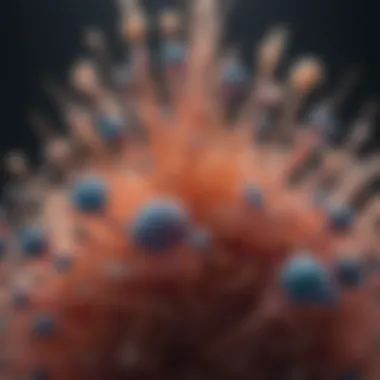
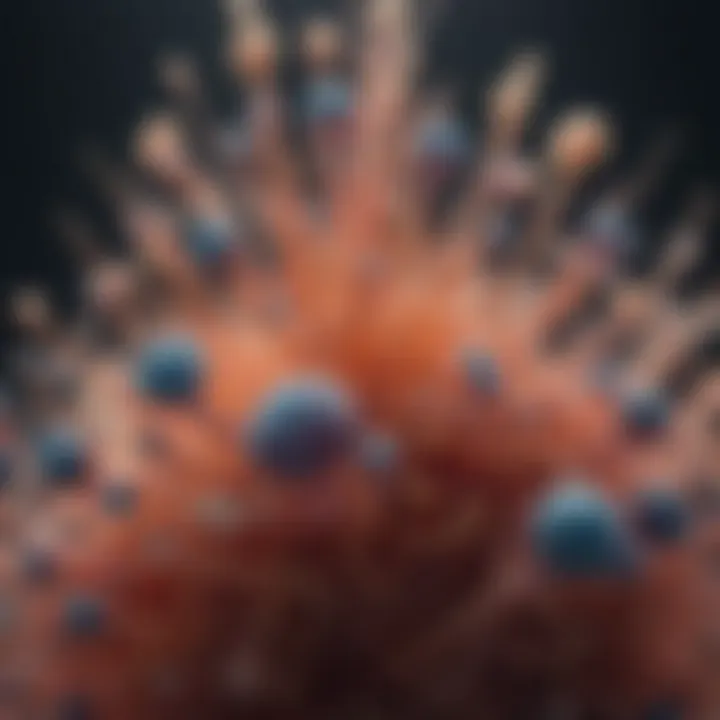
"Once a biofilm forms, it’s like a fortress for bacteria; antibiotics have a hard time penetrating that stronghold."
Understanding Recurrence
To delve into the concept of recurrence, we should first pinpoint what it entails in the context of UTIs. Recurrence in UTIs generally refers to having a second infection within a short period after the primary one has ostensibly cleared up. The statistics paint a stark picture: up to 30% of women who have had a UTI will experience another one within six months. But why does this happen? Several factors contribute to this phenomenon:
- Anatomical considerations: Women have shorter urethras than men, which may play a role in the ease of bacteria entering the urinary tract.
- Hormonal influences: Fluctuations in hormones, especially during menopause, can alter the protective mechanisms of the urinary tract lining.
- Personal hygiene practices: Inadequate practices can contribute to the reintroduction of bacteria.
The cycle of recurring symptoms can significantly impact the quality of life, resulting in anxiety and frustration that go beyond physical symptoms. To tackle this issue effectively, understanding the pathophysiological mechanisms is essential.
The Role of Biofilms in Recurrence
The formation of biofilms adds another layer of complexity in addressing recurrent UTIs. These biofilms consist of clusters of microorganisms that stick to surfaces, encased in a self-produced matrix. Inside this matrix, bacteria can thrive, often going unnoticed by both the host’s immune system and traditional antibiotic treatments. This essentially allows the pathogens to remain dormant in a protective state until conditions are favorable for them to re-emerge. Here are some key aspects to consider regarding their role in recurrence:
- Persistence and resilience: Bacteria in biofilms can survive antibiotic doses that would typically be lethal to them in their free-floating state. This dormancy makes it difficult to completely clear infections, virtually guaranteeing that the bacteria can cause a resurgence after treatment.
- Genetic exchange: Within biofilms, there can also be significant genetic exchange between bacterial cells, which can lead to enhanced antibiotic resistance. This creates a challenging environment for treatment, necessitating a reevaluation of current strategies.
- Colonization of urinary catheters: In individuals with indwelling catheters, biofilms form readily, which can be a major source of recurrent UTIs. The colonization of catheters is often a hidden trigger of these infections, perpetuating the cycle of recurrence.
Diagnostic Challenges
Understanding the challenges associated with diagnosing biofilm-related urinary tract infections (UTIs) is crucial in tailoring effective treatment strategies. These challenges can significantly hinder timely and accurate diagnosis, which, in turn, contributes to the complications associated with biofilm infections. In this section, we will explore specific limitations that standard testing methods face, and discuss emerging techniques that show promise in overcoming these hurdles.
Limitations of Standard Testing
Standard diagnostic methods for UTIs typically include urine culture and dipstick tests. While these tests are widely used, they come with several limitations that can obstruct effective diagnosis of biofilm-related UTIs:
- Sensitivity issues: Regular urine cultures often miss biofilm-associated pathogens because bacteria entrenched within a biofilm cannot be easily flushed out. This means that even when symptoms are evident, the results might still come back negative.
- Time-consuming: The traditional urine culture process can take 24 to 48 hours, delaying the identification of the causative agent. During this period, patients may experience prolonged discomfort.
- Inadequate identification: Many standard tests are unable to accurately identify non-culturable or slow-growing bacteria found in biofilms, leading to misdiagnosis or insufficient treatment strategies.
- One-size-fits-all approach: The culture-based methods often fail to consider the complex microbiological communities of biofilms. Biofilms may contain multiple species of organisms, and standard tests typically focus on a single organism, missing the full picture of the infection.
Due to these limitations, there is a critical need for improved diagnostic approaches tailored for managing biofilm-related UTIs, signaling an urgent call to action for researchers and clinicians alike.
Emerging Diagnostic Techniques
To bridge the gap left by standard testing, researchers are turning to innovative methodologies that offer new hope in accurately diagnosing biofilm-associated UTIs. Some of these promising emerging techniques include:
- Molecular diagnostics: Techniques such as PCR (Polymerase Chain Reaction) allow for the detection of specific DNA sequences from pathogens, even in low concentrations that might not be identified through culture. These methods can also reflect the presence of diverse bacterial species within biofilms.
- Whole genome sequencing: This technique enables deeper insights into the genetic material of the bacteria involved in UTIs. By understanding the genetic makeup, healthcare professionals can tailor treatments specifically to the infection's characteristics.
- Advanced imaging technologies: Innovations like fluorescence microscopy can visualize biofilms in clinical samples directly, allowing for a better understanding of their structure and composition. This helps to confirm the presence of biofilms more reliably than traditional methods.
- Biosensors: There’s a growing interest in developing biosensors that can provide real-time detection of pathogens in urine samples. These devices might deliver rapid results, significantly reducing the wait time for patients.
"The successful diagnosis of biofilm-related UTIs hinges on our ability to not just detect but understand the complexity of these infections. Current and future technologies need to adapt to these challenges to provide better outcomes for patients."
The integration of these emerging diagnostic techniques into clinical practice will represent a significant advancement in the management of biofilm-associated UTIs, enabling more effective patient care and addressing the unique demands posed by these infections.
Treatment Considerations
The topic of treatment considerations is pivotal in the discussion around biofilm-related urinary tract infections (UTIs). Treatment approaches need to be nuanced, taking into account the unique challenges posed by biofilms. Biofilms can create environments where bacteria thrive and resist conventional treatments. Understanding how biofilms impact treatment outcomes helps healthcare professionals devise more effective strategies for managing these persistent infections.
Antibiotic Resistance in Biofilms
One of the chief concerns in treating biofilm-associated UTIs is antibiotic resistance. Bacteria embedded in biofilms exhibit a remarkable ability to withstand antibiotic treatments. This resistance arises from several factors. Firstly, the dense matrix that makes up the biofilm can slow down or entirely prevent antibiotics from reaching all bacterial cells. This means that even if the antibiotic is potent, it may knock out only a small fraction of the bacteria present.
Moreover, bacteria in biofilms can share genetic material, including resistance genes, with one another. This collective behavior can lead to more robust strains of bacteria that are less susceptible to standard treatments. For instance, Escherichia coli, often the culprits in UTIs, can develop resistance over time, complicating the treatment process. Studies show that nearly 80% of chronic infections are linked to biofilm formation, highlighting the pressing need to address this issue seriously.
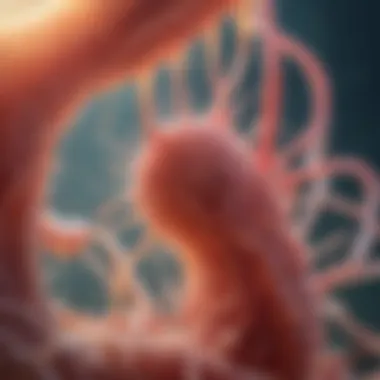
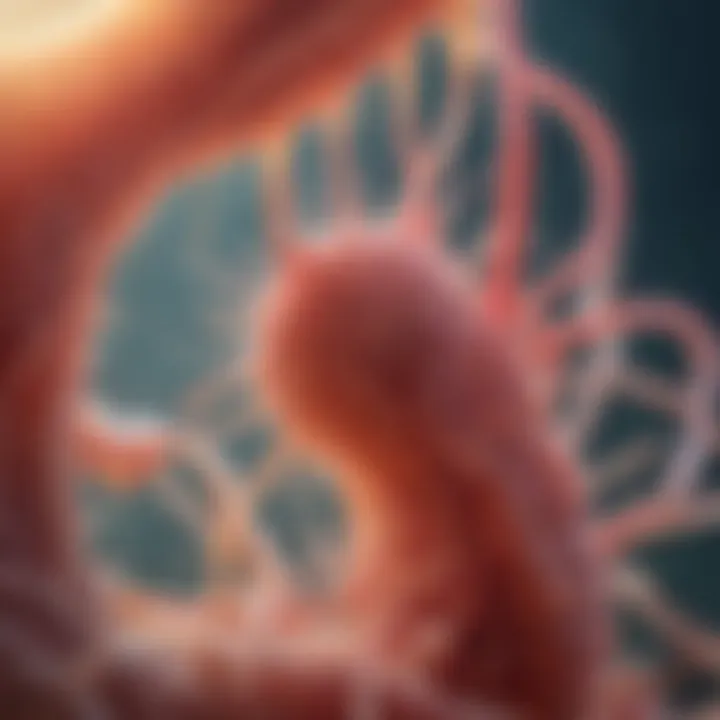
Current Treatment Strategies
Current treatment strategies for biofilm-associated UTIs often include a multi-pronged approach. The following methods are frequently adopted:
- Longer Duration of Antibiotics: In some cases, longer courses of antibiotics may be necessary to penetrate the biofilm effectively, targeting bacteria not initially susceptible.
- Combination Therapy: Utilizing two or more antibiotics simultaneously can overcome resistance mechanisms. This approach may enhance the likelihood of eradicating rogue bacteria lurking within biofilms.
- Biofilm Disruptors: Some emerging treatments focus on disrupting the biofilm itself. Agents that can break down the biofilm matrix, making bacteria more vulnerable, are being researched. For example, enzymes that degrade polysaccharides in biofilms are under exploration.
- Vaccination Research: Emerging developments in vaccines could provide a prophylactic strategy to prevent the initial formation of biofilms or even trigger an immune response capable of battling established infections.
Future Directions in Treatment
Looking ahead, treatment considerations must adapt continuously to the evolving landscape of antibiotic resistance and biofilm challenges. Future research is likely to focus on innovative treatment modalities, including:
- Phage Therapy: Utilizing bacteriophages—viruses that specifically infect bacteria—could provide a powerful alternative to antibiotics, especially against resistant strains found in biofilms.
- Nanotechnology: Nanoparticles are showing promise in delivering drugs more efficiently to biofilm sites, overcoming barriers that hinder traditional antibiotics.
- Modified Antibiotics: Designing antibiotics that can specifically target biofilm bacteria is another exciting area of research, potentially leading to treatments that remain effective even against resistant strains.
- Personalized Medicine: As our understanding of biofilm and UTI dynamics improves, tailored approaches based on individual genetic and microbial profiles may be more common, enhancing treatment efficacy.
"To better combat biofilm-related infections, we must consider not just the treatment but also the environments in which these infections persist."
Preventative Strategies
The management of biofilm-associated urinary tract infections (UTIs) hinges significantly on the adoption of effective preventative strategies. These strategies can help mitigate the risk of developing UTIs that are complicated by biofilm formation. Given the intricate nature of biofilms and their statistics concerning treatment resistance, an emphasis on preventative measures becomes crucial. Not only can this improve patient outcomes, but it can also contribute to reducing healthcare costs over time.
Monitoring and Risk Assessment
Monitoring patient health and conducting thorough risk assessments are foundational components of effective prevention against biofilm-related UTIs. A meticulous approach involves evaluating a range of patient-specific factors that could predispose someone to recurrent infections. Here are key considerations:
- Medical History: Understanding a patient’s past infections and treatments can highlight patterns that should be addressed.
- Anatomical Considerations: For instance, in individuals with urinary tract abnormalities, heightened surveillance and tailored preventive strategies are vital.
- Lifestyle Factors: Diet, hydration levels, and even bowel habits may impact urinary tract health and should be monitored closely.
Through regular check-ups and assessments, healthcare providers can identify at-risk patients early on. This proactive stance opens avenues for interventions before infections escalate, especially in individuals prone to recurrent or severe UTIs. The implementation of assessments and subsequent recommendations must be individualized, tailoring approaches to suit diverse patient profiles.
Behavioral Adjustments
In the realm of prevention, modifying daily behaviors can serve as a simple yet effective strategy in managing the risk of biofilm-associated UTIs. Below are several adjustments patients might consider:
- Hydration: Drinking ample water can help dilute urine and promote regular urination, reducing the likelihood of pathogen colonization.
- Personal Hygiene: Maintaining proper hygiene practices, especially after voiding or sexual intercourse, can decrease the risk of bacteria entering the urinary tract.
- Clothing Choices: Wearing breathable materials and avoiding tight clothing can prevent moisture build-up, which could support microbial growth.
- Dietary Changes: Incorporating cranberry products or probiotics may offer protective benefits for urinary health.
While these adjustments might seem straightforward, their collective impact can significantly lower the risk of UTIs over time. Beyond personal habits, fostering awareness around the signs and early symptoms of infections can empower patients to seek timely help before complications arise.
"An ounce of prevention is worth a pound of cure" when it comes to managing urinary tract health.
Epilogue
In wrapping up the intricate web of biofilm-related urinary tract infections (UTIs), it becomes evident that this topic carries significant weight in both clinical and research realms. The subtlety of symptoms associated with biofilm UTIs requires a nuanced approach from healthcare professionals. Understanding the nature of these biofilms, how they create and perpetuate infection, and their resistances to standard treatment avenues is crucial.
Summary of Key Points
A critical understanding emerges from the exploration of biofilm UTIs. The following points stand out:
- Symptoms: Patients may experience a range of symptoms from typical UTI discomfort, such as painful urination and frequent urges, to more severe, complicated manifestations like chronic pelvic pain and fever. These symptoms underscore the need for attentive evaluation.
- Recurrent Infections: The role of biofilms in recurring UTIs is profound. The persistent presence of these microbial colonies complicates treatment, leading to chronic suffering for patients.
- Diagnostic Challenges: Standard diagnostic methods often fall short when it comes to detecting the specific bacteria associated with biofilms. Emerging techniques that focus on biofilm detection are becoming increasingly essential.
- Treatment Strategies: While traditional antibiotic treatments may not always be effective against biofilm-related infections, exploring alternative therapies is vital for improving patient outcomes.
Implications for Future Research
Future research is pivotal in expanding our current understanding of biofilms in UTIs. Key areas that deserve attention include:
- Innovative Diagnostic Methods: Developing more effective techniques for the identification of biofilm-related pathogens could help clinicians make informed decisions quicker.
- Antibiotic Development: Research aimed at discovering new antibiotics or treatment combinations that can penetrate and disrupt biofilms could revolutionize patient care in this domain.
- Behavioral Studies: Investigating the lifestyle and behavioral habits of patients with recurrent biofilm UTIs may help in understanding predisposing factors and devising prevention strategies.
- Microbiome Research: The interplay between the body's microbiome and biofilm formation could yield insights that refine both prevention and treatment strategies.
The combination of these insights underscores the significance of addressing biofilm infections, not only to alleviate suffering but also to enhance the scientific understanding behind these complex microbial structures. Holistic understanding will lead to better management and, ultimately, an improvement in patient quality of life.







